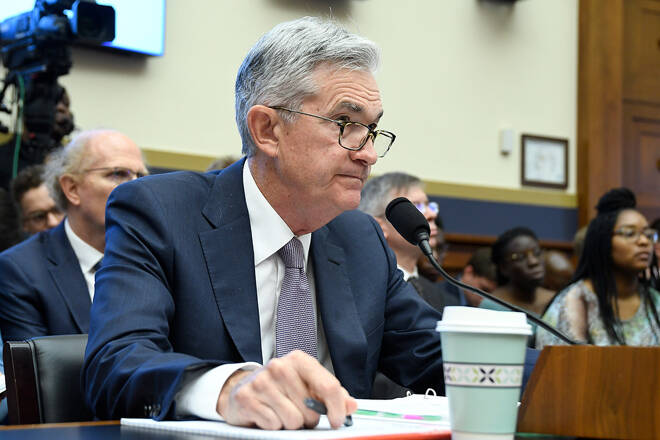Advertisement
Advertisement
Fed Policymakers Took ‘Forceful Action’ to Fight Swiftness of Coronavirus’s Economic Destruction
By:
In its minutes, the Fed also reiterated its previous stance that it would be appropriate to maintain rates at the current near-zero levels until policymakers were confident that the economy had “weathered recent events.”
Today’s Fed minutes didn’t shed much light on the central bank’s future moves, but it did highlight its concerns over the swiftness with which the coronavirus outbreak was harming the U.S. economy and disrupting financial markets. The speed at which the damage was spreading prompted policymakers take “forceful action”, the minutes of the meetings showed.
At its first meeting of the year on January 29, Fed policymakers were expressing an air of cautious optimism about the economy. Fed members were predicting steady growth in 2020 and continued strength in the job market after having to defend the economy in 2019 with three rate cuts to fight the negative consequences of the Trump administration’s trade war with China.
Even through the release of the January minutes on February 19, policymakers remained upbeat about the economy although they did concede the novel coronavirus “warranted close watching”. Ironically, that was the day before the U.S. stock market began its more than one month sell-off.
Comments at that time suggested policymakers thought the virus would likely have minimal spillovers to the rest of the world, disrupting the supply of parts and final goods from Chinese factories but not posing much in the way of a broader threat.
The Fed’s limited concerns in mid-February were probably being influenced by the data being made available from the World Health Organization (WHO) and the Center for Disease Control (CDC) at that time. Remember, it wasn’t until March 12 that the WHO declared the COVID-19 outbreak a pandemic.
On March 2, Fed Chair Jerome Powell announced the first of two emergency rate cuts. On March 15, Powell slashed rates to zero, broadened access to U.S. dollars for foreign banks and restarted the massive asset purchases that have come to define monetary policy in a crisis.
Despite the aggressive actions by the Fed, the virus had already spread to the United States, and the crisis was worsening here and around the world.
By then it was already too late for the Fed to consult its conventional models since they proved progressively less able to measure what was happening to the U.S. and global economy. At that time, the Fed had no choice but to whip out its playbook from the 2008-2009 financial crisis and to start making moves to stabilize the financial markets and the economy.
With today’s minutes, most Fed officials now agree the U.S. economy is in a recession that may cut U.S. output by double digits in the second quarter and place about 20 million people or more on the unemployment line, at least temporarily. The measures to control the spread of COVID-19 are primarily responsible for those numbers.
In its minutes, the Fed also reiterated its previous stance that it would be appropriate to maintain rates at the current near-zero levels until policymakers were confident that the economy had “weathered recent events.”
About the Author
James Hyerczykauthor
James is a Florida-based technical analyst, market researcher, educator and trader with 35+ years of experience. He is an expert in the area of patterns, price and time analysis as it applies to futures, Forex, and stocks.
Latest news and analysis
Advertisement
